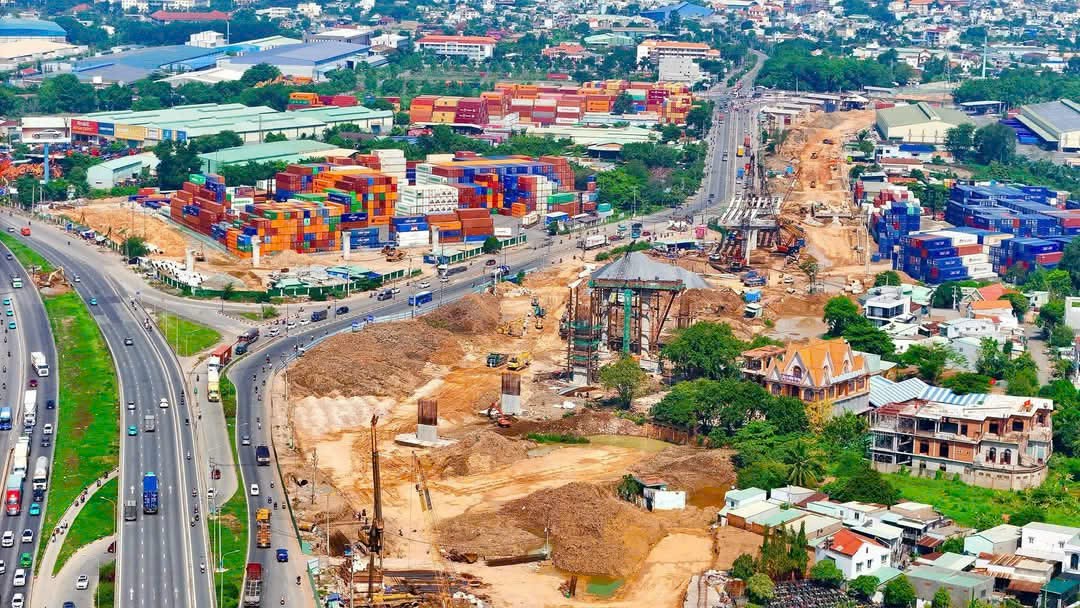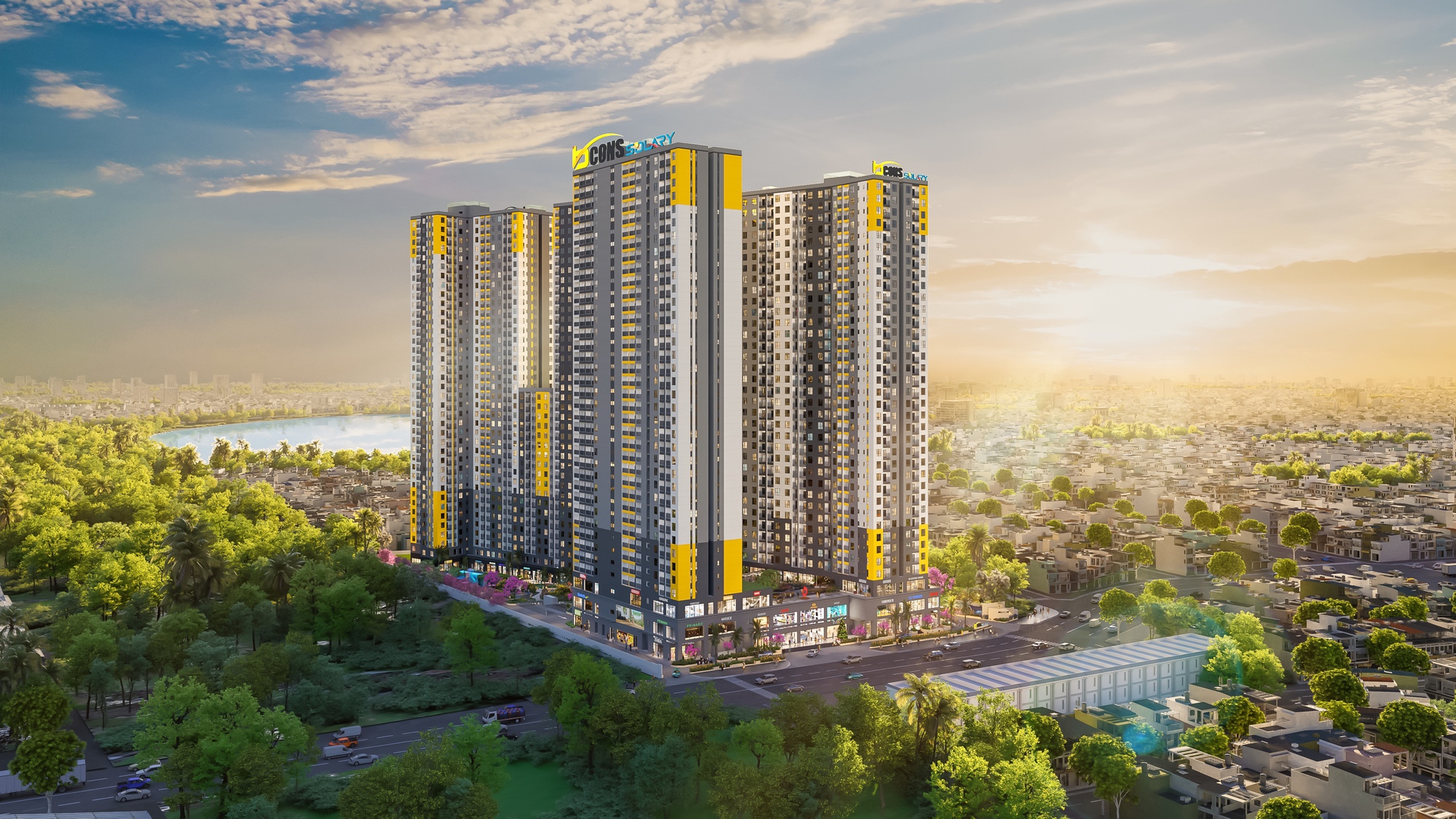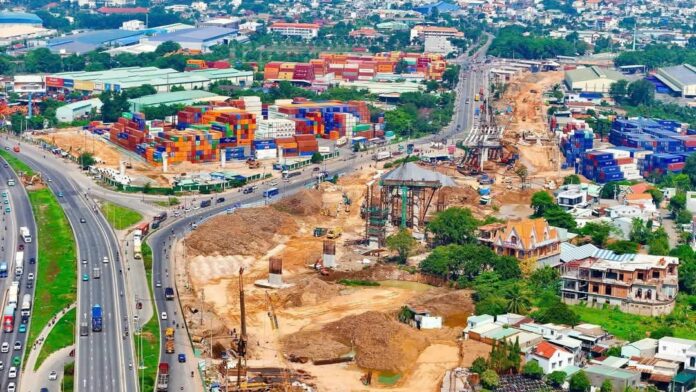TOD unlocks new growth opportunities for Ho Chi Minh City
Transit-Oriented Development (TOD) is an urban development model that goes hand in hand with public transportation. This model offers an efficient and sustainable solution for rapidly urbanizing areas and cities facing issues such as pollution and traffic congestion, like Ho Chi Minh City.
TOD creates high-density urban areas with integrated amenities, blending residential, office, commercial, and entertainment spaces with convenient transportation access due to their proximity to train stations, bus terminals, or major roads. Thus, this model is deemed to foster sustainable urban development, enhance citizens’ quality of life, and help decongest the city center.
In the coming years, Ho Chi Minh City plans to implement 11 TOD models along Metro and Ring Road 3 lines, as per Decision No. 4836/QD-UBND dated October 30, 2024. The urgency to expand the city beyond its central areas is crucial to accommodate the integration of Ho Chi Minh City with Binh Duong and Ba Ria-Vung Tau provinces. The General Secretary affirmed that the city’s new mission is to become an international metropolis, a regional linkage center, and a driving force for the country’s development. Thus, the trend of urban renovation will be a key focus for Ho Chi Minh City, opening up new economic growth opportunities.
Di An City: A TOD hotspot in the new Ho Chi Minh City
In the new Ho Chi Minh City landscape, Di An will be one of the key areas for constructing a new urban paradigm. Its geographical location serves as a springboard for Di An to thrive. Specifically, Di An City is adjacent to Thu Duc City, which is rapidly urbanizing, and it also accommodates several critical transportation arteries, including Ring Road 3 and Metro Line 1.

Ring Road 3, currently under construction by Binh Duong Province
National Highway 13 and My Phuoc – Tan Van Road have long been considered the “backbone” connecting Binh Duong and Ho Chi Minh City. Along this route, several large industrial parks have emerged, including VSIP, Song Than, Dong An, and Tan Dong Hiep, attracting a substantial workforce from various provinces and contributing to a vibrant real estate market in the area.
The above analysis explains why leading developers, such as Bcons Group, have chosen Di An as their investment stronghold, with remarkable success. Specifically, by 2025, Bcons Group will have introduced 14 apartment and townhouse projects to the market. Most recently, in Q2 2025, Bcons Group announced Bcons Solary, a project poised to seize the TOD trend in the new development phase. Strategically located next to Ring Road 3 and the extended Metro Line 1, this project is also at the heart of the TOD area that Binh Duong Province plans to develop.

Bcons Solary, adjacent to the extended Metro Line 1 from Ben Thanh to Suoi Tien and the new Binh Duong City
In the province’s master plan for the period of 2021-2030, with a vision towards 2050, Binh Duong has set a goal to focus resources on investing in, upgrading, and expanding its transportation network to alleviate traffic congestion on critical routes, thereby boosting socio-economic development. Thus, Binh Duong’s TOD model will also be linked to urban railway lines connecting Ho Chi Minh City and Dong Nai, as well as Ho Chi Minh City’s Ring Roads 3 and 4, in the future.
In theory, this is the plan, but what about in practice? It is evident that once the Ben Thanh – Suoi Tien Metro line in Ho Chi Minh City becomes operational, it will firmly establish the foundation for the public metro transportation trend and catalyze investment plans in neighboring areas. Currently, as a continuation of Metro Line 1, which originates in District 1’s center, Binh Duong is expediting the implementation of a 32.43-km Metro section along Ring Road 3, connecting Suoi Tien Bus Station to S1 Station (A1 roundabout in the new Binh Duong City center, Hoa Phu Ward, Thu Dau Mot City). According to the schedule, construction on this project will commence in 2027.
The existing transportation infrastructure in Di An City lays the groundwork for the area’s real estate prospects. And notably, locations like Bcons Solary become the focal point of strategic investors’ attention and acquisition desires.
NewGen Invest – Strategic Distributor of Vinhomes Green City & Vinhomes Southern Region
NewGen Invest, a leading real estate investment firm, has reached new heights with its pivotal role in the distribution of Vinhomes Grand Park, an iconic development in the heart of Ho Chi Minh City’s vibrant eastern district. Now, the company has been entrusted yet again by Vinhomes as a strategic distributor for their newest project, Vinhomes Green City. This testament to NewGen Invest’s expertise and standing in the industry showcases their ability to consistently deliver exceptional results.
“Provincial Land Prices are on the Rise: Investors Eye the Market”
The land plots priced at 30-35 million VND per square meter in the vicinity of Ho Chi Minh City, such as Can Giuoc, Duc Hoa, Ben Luc in Long An, and Long Thanh in Dong Nai, are becoming scarce. Compared to the same period last year, land prices have surged by 10-25%, depending on the lot and location. The primary supply entering the market is currently very limited.
Mall in Central Ho Chi Minh City: Internal Alarm System Has Tenants Shutter Their Shops When ‘Market Management’ Arrives, But Who’s the Owner?
As the inspection team arrived, the security staff at Saigon Square immediately sprang into action. Their walkie-talkies crackled to life, and a swift message was broadcast over the internal speakers, alerting vendors to shut their shops. This deliberate obstruction complicated the inspection and enforcement process.
Saigon Square – The Stubborn Heart of Counterfeit Goods Trade in Ho Chi Minh City’s Center
Saigon Square has been subjected to multiple inspections and interventions, yet the rampant trade of counterfeit goods persists unabated.





















